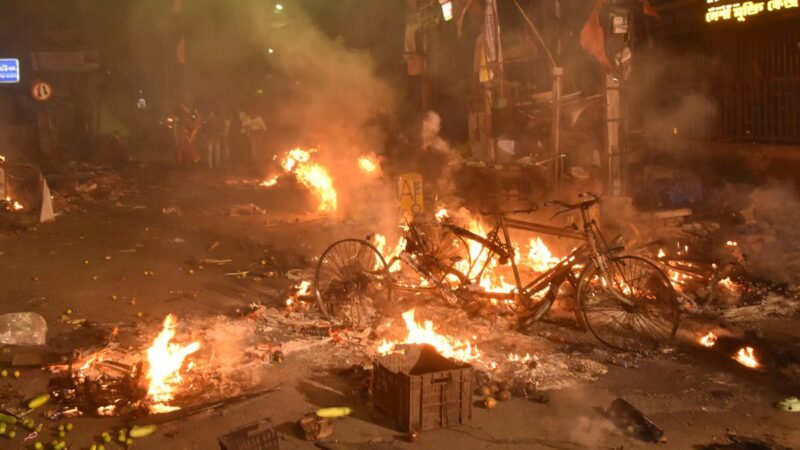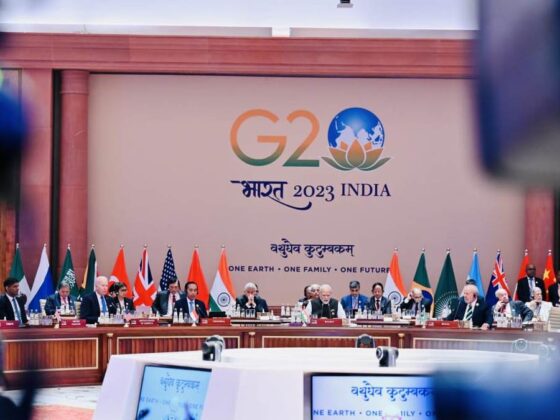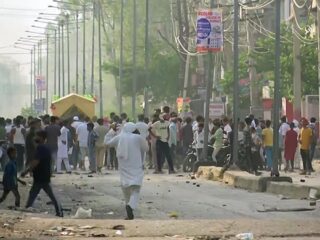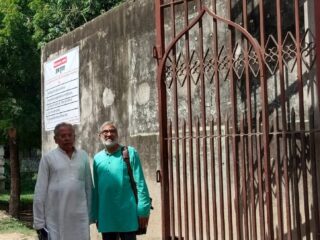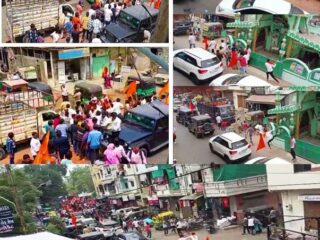03/10/2023
According to media reports, communal violence broke out in Howrah and Hooghly districts in the state of West Bengal where Ram Navami processions were taken out in the two districts on 30th March and 2nd April, 2023 respectively. The procession in Howrah was organized by Vishwa Hindu Parishad (VHP) and Anjani Putra Sena from Shibpur in Howrah and witnessed the members of the procession carrying swords, lathis and other weapons, according to one of the six FIRs registered by the National Investigative Agency (NIA). The reason cited for the violence in the FIR is that the procession came under attack on GT road where stones and bricks were allegedly thrown by Muslim on the participants of the procession.
Similarly, violence broke out on 2nd April in Rishra, Hooghly. According to the FIR registered on the complaint of sub-inspector Piyali Biswas, posted with Rishra police station, stated: “On April 2, a rally of 1,000 to 1,200 people was coming towards Baro Masjid Rishra, with DJ sound system (playing), at around 6 pm. Suddenly, tension occurred in front of the Baro Masjid area between two communities and they entered into arguments. They started fighting… (and indulged in) pelting stones and crude bombs in their possession, resulting in grievous injuries.” The procession in Rishra led to stone pelting in Rishra in Hooghly. No deaths were reported. It was reported in the media that communal violence also broke out in Dalkhola.
On 3rd April, police personnel were allegedly attacked in areas under the jurisdiction of Serampore and Rishra police stations. Cases were handed over to the NIA to probe the violence on the orders of the Calcutta High Court after the Leader of Opposition in the WB State Assembly belonging to the BJP – Suvendu Adhikari petitioned to the High Court.
Centre For study of Society and Secularism (CSSS), Mumbai in collaboration with AAMRA (An Assemblage of Movement Research and Appraisal), Kolkata organized a fact-finding mission and the team visited the districts of Howrah and Hooghly from 8th to 10th June, 2023. AAMRA had also visited those areas and adjoining areas for their field study before and after said period. The team consisted of Irfan Engineer, Director of CSSS and prominent author, Neha Dabhade, Deputy Director of CSSS, Subha Protim Roy Chowdhary, Director of AAMRA, Mohit Ranadip, Director of AAMRA and prominent Psychologist, Faruque Ul Islam, Deputy Director of AAMRA and Samindra Sarkar, Deputy Director of AAMRA.
Methodology:
The team met Adv. Abhijeet Datta, human rights lawyer, and member of APDR who was an eye witness to the procession in Shibpur, Ritu Singh, member of VHP and Durga Vahini in Howrah and one of the organizers of the procession. The team interacted with Shiv Sahai Singh, a journalist from Hindu to understand the context of Howrah better. Though the team went to the office of Commissioner of Police in Howrah, the police refused to provide any information to the team and obstructed the team from going to the affected areas and meeting the residents. The police intimidated the team and escorted the team out of the limits of Howrah district.
In Rishra, Hooghly the team met members of the Hindu community in Sandhya Bazaar, family of Vijay Mali who claimed to have been attacked during the procession, and other residents of the neighbourhood. The team met Councillor Manoj Singh of BJP from ward no 10 and Zahid Khan of TMC. The team had the opportunity to interact with the residents living around Jama Masjid in Rishra, Hooghly.
Context of violence in West Bengal:
West Bengal has an interesting history. West Bengal is land of thinkers and revolutionaries who contributed immensely to the freedom struggle. Hindus and Muslims fought side by side and posed a formidable challenge to the British Empire in India. That also led to the partition of Bengal in 1905 though the reason cited by the British was administrative convenience. Although the partition was revoked later, the seeds of communalism were sown. The independence of India was preceded by communal violence- Hindu Muslim riots in Noakhali in East Bengal (present Bangladesh). Accompanied with heart wrenching bloodshed, Bengal was partitioned into Hindu majority West Bengal which was part of India and Muslim majority East Bengal which was part of Pakistan.
Post-independence, West Bengal was ruled by INC and then for 34 long years by LDF ((1977-2011). The LDF was characterised by almost no major communal riots at least reported in the media. The lack of major violence in this phase can be attributed to two significant factors, namely- Left Front government which didn’t instrumentalize religious identity for political or social mobilization and secondly tradition of syncretic culture in Bengal. The Left Front ideologically didn’t capitalize on religious identity but appealed more to Bengali identity or Bengali nationalism. The police under the Left Front acted swiftly to control communal riots. The state didn’t promote or target any one religious community. West Bengal has around 27% Muslim population and these votes are crucial for any party to come to power. However, this didn’t translate into development of Muslims and the Muslims remained one of the most marginalized communities as indicated in the Sachar Committee report and other committee reports. Equally important in keeping in check communal sentiments is the role played by teachings of Tagore, Nazrul and Folk-cultural tradition of Baul-Fakir strengthened the social fabric of the society.
After the coming of power of TMC government in 2011 and in the wake of the general elections in 2014, communal undercurrents and attempts at religious polarization intensified. The BJP’s central plank to attack the TMC has been allegations of “appeasement of Muslims” and that Hindus are unsafe in West Bengal. Partly, the symbolism and tokenism chosen by TMC leadership can be blamed for this allegation. But on the whole, the BJP has been successful in making inroads in the vote share in Bengal (figures given below). This political contest played on religious terrain often saw intense communal slurs. For instance, top leaders of BJP in the past called CM Mamata Banerjee as “begum” and her nephew “Aurangzeb”.
Such persistent communal narratives and churnings have helped BJP become the main opposition party in West Bengal dislodging INC and Left. While the TMC is ruling West Bengal, the vote share of BJP has improved in the state. In the 2021 state elections, the BJP won 38.1% of votes. In 2016 state elections BJP had garnered 10% vote share and in 2010 it stood at mere 4%. Evidently, in the state assembly elections, the BJP is slowly but surely making a dent. Similarly, in 2014 Lok Sabha elections, BJP polled 18% votes and in 2019, a whopping 40%. The BJP has thus emerged as a formidable opposition to the TMC by trying to polarize the Hindu votes.
The strategy of the BJP in West Bengal is to create a strong ‘Hindu’ consciousness and identity through a range of Hindu symbolism. The TMC has countered this narrative with its own consolidation around “Bengali nationalism” and symbols. TMC constantly projected the BJP leaders as outsiders who know nothing about Bengal and its great tradition and culture. TMC has successful created pride about the great culture of Bengal and its contribution to India. One of the symbols of Bengali culture and nationalism is Durga and Durga Puja and TMC heavily supports “clubs” which organize Durga pujas. Though TMC has its base in Hindi speaking area, they call BJP and it’s national leaders as ‘outsider’ largely consisting of migrants from Bihar and UP- calling them ‘outsiders’. Ironically, the BJP has been able to mobilize on this Hindi speaking population and convert it into its support base.
One of the primary symbols used by BJP and the right in West Bengal to raise ‘Hindu’ consciousness have been Ram and Ram Navami. In 2022 too, communal riots took place in Howrah district of West Bengal. In Howrah, West Bengal, processions on Ram Navami were organized by the Vishwa Hindu Parishad, Bajrang Dal, Durga Vahini. The members of the procession delivered provocative speeches and stone pelting ensued in Howrah’s Shibpur. Local police resorted to lathi-charge to disperse the crowd, but as the situation got worse, the Rapid Action Force had to be called in to bring the situation under control (Dutta, 2022) (Engineer & Dabhade, 2022).
In 2018 too communal violence took place in Asansol where one youth lost his life. In Asansol in West Bengal, clashes broke out during Ram Navami celebrations with the support of VHP. Loud music played in the rally led to altercation claiming one live. In the face of the brutal death of his son, Imdadulla Rashidi, a Muslim imam, appealed for calm and peace which averted more violence. (Dabhade, Engineer, Nair, & Pendke, 2018). At the same time, communal riots also took place in Raniganj in West Bengal.
Interestingly, festivals are used as trigger points for competitive communal politics by the TMC and BJP. For instance, in 2017, CM Mamata Banerjee, ordered that Durga idol immersions coinciding with Muharram would not be allowed. Banerjee and her top police officers have justified the administrative order on grounds that the government wants to preempt any clash between the routes of immersion and Muharram processions, and avoid any law and order problems. However, the BJP and the rest of the Sangh Parivar called this another example of Banerjee’s “appeasement of Muslims” at the cost of Hindu rites, and are threatening to violate the order. The Calcutta High Court later cancelled the West Bengal government’s decision to restrict the immersions. Banerjee’s move to have Muslim style public prayer and decision to give allowance to Muslim imams has led to repeated accusations of ‘Muslim appeasement’.
In East Medinipur in the state of West Bengal, 30, December, 2019 Christmas celebrations in a Church were disrupted when a group of men entered the church premises raised slogans “Jai Shree Ram“, attacked about 100 worshippers and vandalized the church and a vehicle belonging to the pastor. According to police, one was severely injured and others few had minor injuries and the locals appeared to be associated with the BJP as per the initial investigation. (Engineer, Dabhade, & Nair, Communal Riots 2019: Communal Discourse Raging On in India, 2019)
In December 2016, communal riots took place in Dhulagarh town in Howrah district over Eid Milad-un-Nabi procession. The riots continued for two days. Both, houses of Hindus and Muslims were attacked and both the communities suffered losses. The conflict was allegedly started as some of the residents mistook a green flag in the procession to be the flag of Pakistan (Reyaz, 2017)
Other triggers in the recent communal riots include the use of social media to offend communities and their religious sentiments leading to communal tensions and communal riots. Some of the instances are cited below.
On 10th June, 2017, Purulia town in south-west West Bengal, witnessed tension after clash between two groups over social media posts that allegedly hurt religious sentiments. According to local residents, a few persons were injured in the violence. Rapid Action Force [RAF] was deployed in the area. Tension started brewing when a member of one community allegedly posted a comment on social media hurting the religious sentiments of the other community. The situation flared up when the second group responded with a counter post. Members of the two communities took to the streets and resorted to vandalism. At least five persons were arrested. (Engineer, Dabhade, & Nair, India 2017- A year of Hatred, Impunity and Heightened Identity Politics, 2018)
Communal clashes broke out in Basirhat in North 24 Paraganas district of West Bengal in July, 2017, over an “objectionable” post on Facebook, prompting the state government to rush 400 troops of paramilitary BSF to assist the police in containing the situation. One Hindu youth was arrested on the same day of incident who allegedly circulated the post. Dozens of shops and houses, and at least six police vehicles, were torched by Muslim mob. Hindu mob also retaliated after a day as per AAMRA report. One person who was injured in the violence later died at a hospital. (Engineer, Dabhade, & Nair, India 2017- A year of Hatred, Impunity and Heightened Identity Politics, 2018).
In 2016, communal riots took place in Kaliachak town of Malda district when Muslims took out protest rally against objectionable speech against the prophet -hate speech of Akhil Bharat Hindu Mahasabha leader Kamlesh Tiwari. The mob attacked vehicles and Hindu houses. The mob torched buses and police vehicles, ransacked government properties and set the Kaliachak police station on fire. Some of the Muslim groups had attacked vehicles, Hindu houses, police station, but a huge gathering in the field did not touch an adjoining big temple, according to a fact finding report brought out by AAMRA (Report).
The extent of the prevalence of communal riots can be gauged from the figures revealed through an RTI. According to a reply to the RTI, at least 65 cases of communal violence in various months were registered in just 18 months between January 2021 and June 2022. Howrah rural police district registered 28 cases, the highest in the state (Singh, 2023).
The other activities of the right-wing organizations apart from organizing Ram Navami festival procession have been organizing Ganga Aarti, satsangs, bringing out patrikas, shakhas for women and Bajrang Dal. They arrange blood donations, medical camps, ration card drives and carried out relief work during COVID. In one of the latest initiatives, the VHP and Durga Vahini purchased tickets of the film ‘Kerala Files’ which was banned in West Bengal. According to Ritu Singh, the membership of VHP/ Bajrang Dal in Howrah is around 12,000 and of Durga Vahini is around 3000. She also boasted that the Ram Navami processions have helped the BJP cement its position as main opposition to TMC by dislodging the Left and the INC and posing a formidable challenge to the TMC by creating “Akrosh” (unrest) in the Hindus in Bengal. She also added that aggressive door to door campaigning regularly helps to reach out to the people.
Some of the issues that the BJP and the right wing used to exacerbate polarization are festivals and religious symbols like mentioned above. Like elsewhere in other parts of India, the BJP and the right are supporting reclaiming of historical or other spaces as ‘Hindu’ and trying to make connections with India’s glorious past. In West Bengal’s Tribeni town, Kumbh Mela tradition has been revived after 700 years. The venue of the ‘revived’ fair was barely a few hundred metres from a 13th century Islamic structure, Zafar Khan Ghazi’s dargah. The Reclaim Temples website list the dargah as an Islamic structure allegedly built after destroying a temple. The website raises funds for so-called temples to be rebuilt at the same sites. Attention was drawn to this ‘tradition’ by Kanchan Banerjee, a Bengali who lives in the US, and the Tribeni Kumbho Porichalona Shomiti. The PM hailed this mela on his ‘Mann ki Baat’ and the state government has been funding it. This Mela was started in 2022 and again in 2023 and attended by over 8 lakh people.
The constituency that the BJP and right wing has maximum support is the Hindi speaking population and the migrants from Bihar and UP. While the TMC seems to have in the past distanced itself from the Hindi speaking migrant community in West Bengal calling them “guests” and “outsiders”, the BJP has capitalized on the communal in terms of social and political mobilization. The core social groups supporting the BJP are the Rajputs, Sahu, Marwari and other OBC communities who have migrated from northern India. These communities have an affinity to the BJP and BJP enjoys immense support amongst these groups.
Context:
The fact-finding team was told by Ritu Singh, leader of VHP and others too including Dutta that Ram Navami is not a religious festival which was originally celebrated in West Bengal. It is not organic to the social and cultural ethos of Bengal. It is being celebrated mostly from the past 5 to 10 years. Durga puja, which is mostly organized by “clubs” is more popular in West Bengal. However, in the past 5 to 6 years, Ram Navami is being organized with great zeal and is the participants carry arms, weapons and is accompanied by loud DJ music. It has a set route.
This year too, the route followed by the procession in Howrah was the same as that of the previous year. According to Shiv Sahay Singh, prominent journalist, the Chief Minister of West Bengal, Mamata Banerjee had issued an alert about possibility of riots days before the riots took place. She said, “I want to request that those who are taking out processions for Ram Navami today, please do, but do it peacefully. Kindly avoid the Muslim areas as Ramzan is going on. Celebrate peacefully and don’t try to create violence. Don’t get provoked. Some BJP leaders are saying they will come in with swords and knives during the processions. But don’t forget a criminal offence is a criminal offence and the courts will not spare you ( (India Today, 2023)”
Ironically, the police in Howrah on their twitter had put out congratulatory messages for the procession. Another significant factor was the Panchayat elections which were held recently.
Reconstruction of Events:
Howrah:
On 30th March, a Ram Navami procession was organized and taken out by VHP and Anjani Putra Sena in Howrah District of West Bengal. The fact-finding team couldn’t ascertain if the organizers had the necessary permissions for the processions though Ritu Singh of the (Durga Vahini?) said that they had permission for this procession. The procession was organized in Shibpur area of Howrah and passed through the main GT road. According to Adv. Abhijeet Dutta, prominent Human rights lawyer and an eye witness who was commuting through the route of the procession narrated to the fact-finding team that he saw around 600 persons on the GT road at about 4.30pm on 30th March. Only two-wheeler vehicles were allowed on the road that day. The procession had huge DJ music system playing songs. The participants of the procession were carrying swords and knives. They also had posters depicting angry Hanuman faces. Adv. Dutta observed that most of the participants in the procession appeared to be non-Bengalis and mostly Hindi speaking community or “Khotik”- marginalized caste community from Jharkhand and Bihar.
Dutta rued that the procession didn’t seem religious or spiritual since the participants were aggressive and making violent gestures. It appeared to him that they wanted to create mischief and disturbance. He observed that very few police were present during the procession. Shiv Sahay Singh believed that the procession had support from local shopkeepers and the same route was followed as last year. Ritu Singh told the team that the procession starts from B College gate number one and passes the tram road and GT road before it turns to Mallick Fatak and goes towards Ram Krishna Ghat covering a distance of roughly 8 kilometres. She claimed that the procession of a few thousands came under attack by Muslim residents near Shibpur police station. Singh alleged that bottles and stones were hurled at the procession. She claimed that 35 to 40 persons suffered minor injuries while two participants from the procession were seriously injured. She complained that there were very few police present during the procession and alleged that the police disappeared from the scene of violence just before the procession was attacked. Later, the police came and diffused the situation. Ritu Singh said 36 Hindus from the procession were arrested and six Muslims were arrested.
Hooghly:
Communal violence took place in Rishra locality of Hoogly District on 2nd April, 2023 when Ram Navami procession was organized by different organizations (Attach picture). The procession started at 3pm on 2nd April and same route is followed for almost ten years. The starting point of procession was Prabhash Nagar and it passed through Jama Masjid and GT road. Around 5.40pm, when the procession came in front of Jama Masjid, it was time of Azaan. According to Mazhar (resident near the Jamma Masjid), some of the residents and devotees in the Mosque asked the procession to stop the DJ music for two minutes for the call of Azaan. The altercation started due to this request. The members from the procession attacked the mosque and adjoining shop. This shop belonged to a Hindu owner but unaware of this fact, it was partially burnt down by the members of the procession. There was retaliation by the Muslim residents too. According to the residents near the Jama Masjid, most of the participants in the procession were not local residents but from out of Rishra and unfamiliar with the area. They narrated that when the stones were pelted, the members of the procession didn’t know the lanes and were lost. The residents said that the area around the Jama Masjid is populated majority by the Muslims and there are only two Hindu households. But the two Hindu houses were protected by the Muslim neighbours. Similarly, the shop partially burnt by the members of the procession was repaired by the Muslim neighbours. He also added that the Muslims in Rishra participate with great enthusiasm in the Jagdhatri puja that is very popular in Rishra. He said some of the Muslim residents were also part of the committee which organizes the Jagdhatri puja and celebrations.
According to Manoj Singh, BJP Councillor from Rishra, when the procession reached the Jama Masjid, the Muslim residents had a problem with the DJ box and the slogans of “Jai Shri Ram” and that’s why they attacked the procession. Manoj Singh alleged that Muslims raised the slogans “Nare Takbir, Allah hu Akbar” and then started pelting stones. He alleged that tyres were thrown at the members of the procession. As per Singh, over 50 participants from the procession were injured and vehicles were set on fire. He observed that the police lathi charged on the procession and threw tear gas on the procession and not on Muslims. According to him in total 128 persons were arrested- 90 Hindus and rest were Muslims.
On 3rd April, police personnel were attacked near gate no 4 of the Rishra Station. According to Zahid Khan, TMC leader, there are no Muslims near gate number 4. The police tried to stop the mob coming to create disturbances and that’s why it was attacked by explosives.
Suvendu Adhikari, opposition leader from BJP urged the High Court to transfer the cases related to the riots to the NIA for “impartial” probe and now it is been investigated by the NIA.
Findings:
Use of festivals by Right Wing:
Almost all respondents the team interacted with said that Ram Navami is not traditionally celebrated in West Bengal. Durga Puja and other festivals are more popular. However, the celebration of Ram Navami has started only around 10 years back, coinciding with the ascent of BJP. The BJP and Hindutva right wing groups have been organizing the festival to politically mobilize the citizens on the basis of religion- consolidating the ‘Hindu’ identity instead of ‘Bengali identity’. BJP and TMC leaders have been at the forefront and active in the processions. These processions have been aggressive and armed. According to Manoj Singh, the Hindi speaking population in Howrah and especially Rishra enthusiastically participate in Ram Navami processions.
Ram as a symbol and Ram Navami a signifier of Hindu supremacy are used by the right wing in West Bengal to mobilize politically. The armed processions are an expression of supremacy and assertion over the Muslims. The Ram Navami procession this year too were organized with the intention of creating Hindu consciousness and instigating violence.
Role of Police:
The eye witnesses in Howrah and organizers of the processions allege that there were very few police personnel present during the procession. It is worth noting that Ram Navami processions in West Bengal in the past have been violent and warranted abundant caution from the police to avoid repetition of violence. However, the police didn’t act adequately to avoid the violence.
The organizers of the procession allege that the police have mostly arrested the Hindus and lesser number of Muslims. It doesn’t appear that the police arbitrarily arrested persons as witnessed in other states after Ram Navami violence. However, it is shocking that the organizers were allowed to organize the procession in the first place.
Role of State:
The political landscape of the state is marked with a bitter contest between the ruling TMC and BJP and competitive communalism. This competition and tussle for one-upmanship has determined how communal violence has unfolded in the state and the response of the state to the same. In the communal riots that unfolded in Howrah and Hooghly, the West Bengal administration failed to prevent this violence despite anticipating it. Though the Chief Minister, Mamata Banerjee warned of the violence and warned against going into Muslim dominated areas, the violence unfolded as it did in the previous years. The TMC led administration allowed these processions to take place and the police didn’t do enough to avoid the violence.
The BJP on the other hand, is trying to create a narrative that the state government is unable to protect law and order and security of the residents (read Hindus). And thus, approached the High Court to hand over the investigation to the NIA. The High Court too surprisingly handed over the case to the NIA. This move in a way points to an alarming precedent where constitutional mechanisms and institutions are manipulated to trample upon the democratic functioning of the state governments by the centre. The BJP by popularizing the narrative that the TMC government is partial against the Hindus and favouring the Muslims is polarizing the Bengal society on the basis of religion for political ends.
Design of mob to continue violence on 3rd April:
In Rishra, at gate number 4 on 3rd April a mob attacked the police. The mob wanted to cross to the town of Rishra and create disturbances. The intent was clearly to inflict more harm and continue the violence from the previous day. The mob was armed with crude bombs and explosives. The letter of Suvedu Adhikari to the Calcutta High Court cites the use of explosives as one of the reasons for the NIA to take over the investigation. Ironically, there are no Muslims near the gate no 4 making it improbable for the Muslims to attack. The police thwarted this attack and didn’t allow it to spread to other localities. Yet the narrative promoted is that Muslims are perpetrating violence and the state government is not investigating the violence. The BJP is using this pretext for political ends.
Impact on dialogue between communities:
The panchayat elections were announced recently in West Bengal. While it remains to be seen if the communal riots have led to polarization reflecting in votes, however, the team noticed in Rishra that there was little dialogue between the members of Hindu and Muslim community to discuss about the violence or how to avoid it in the future. The BJP’s hold on the North India Hindi speaking community in Hooghly is evident. The vote share of BJP in West Bengal has steadily increased and this could be at least partially attributed to religious polarization.
Recommendations:
- Disciplinary and punitive action against police personnel for their tardy and inadequate response during the communal violence
- Permissions should be restricted to religious processions have the propensity to foment communal riots and such processions should be video graphed
- Police should act independently without pressure or influence from the state or centre government and act impartially.
- Arrest of the perpetrators without delay and thorough investigation
Civic society should take constructive peacebuilding measures including inter-faith dialogue and peace

